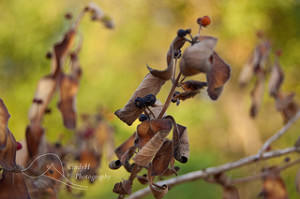The Effect of Rising Temperatures on Food Staples
“Wheat breeders should start genetically enhancing the crop to maintain yield under higher temperatures using all available means in the tool kit. In this way, they will assist in building cropping system resilience to the global warming hazards that could jeopardize the livelihoods of resource-poor farmers who depend on the wheat harvest,” the study says.
Currently, genetically modified wheat has not been approved for use Canada. The issue has been enormously divisive in the U.S., where agricultural retailer Monsanto has developed wheat strains designed to the company’s own weed-killing products.
New Foods
Forty years from now, according to the IFPRI report, people will most likely still eat the same kinds of grains they eat now – just less of them overall. People in developed countries will eat 6.8 to 12.2 per cent less cereal; in developing countries, people will likely eat 7.6 to 12.1 per cent less.
Magnan writes that, “While it appears people will consume staples in the same proportions with climate change or with perfect mitigation, they will consume slightly less of them. For those who eat meat, it does not seem that the amount they eat alongside their staple of choice will be lower with climate change.”
This, he points out, is despite the fact that in every studied climate scenario, grains are each more expensive than if climate change was completely halted.
Although the developed world might be able to pay the extra money to keep grains on the dinner plate, the prognosis for the developing world isn’t so good. According to research published in 1996 by the Food and Agricultural Organization of the United Nations, although globally, grain production might not see a decrease beyond single digits, developing nations are likely to see a decrease of ten per cent, on average.
And according to the research report, “if climatic change were to retard economic development beyond the direct effects on agriculture in the poorer regions, especially in Africa, then overall impacts could be sizable.
“This loss of production in developing countries, together with rising agricultural prices, is likely to increase the number of people at risk of hunger, in the order of five to 15 per cent in the less severe climate scenarios, and [roughly] 50 per cent in [more severe scenarios].”
Alternative Heat-Resilient Edibles
So what is the world going to eat when grain and soy production comes under threat? Research has revealed that the crops with the potential to prosper are those already grown in hot regions.
Plantains and certain species of banana, already popular staples in much of the world, grow well in the heat and could take a larger role in the future.
One food that’s been lauded for its ability to not only beat the heat, but to thrive in it, is the cassava – a humble tuber most often grown in Southeast Asia, Africa, and Latin America. For these regions in particular, the cassava might be what fills in for other staple crops in the face of climate change. Scientists have dubbed it the “Rambo root” of agriculture, for its resistance to climbing temperatures.
A 2012 study published in the scientific journal Tropical Plant Biology found that “cassava is potentially highly resilient to future climactic changes and could provide Africa with options for adaptation whilst other major food staples face challenges.”
But even the cassava has a weak point in the face of global warming; although yields actually increase in hotter weather, the diseases that destroy the roots also like the heat. The Global Cassava Partnership estimates that each year, at least 50 million tons of cassava roots are lost to disease.































Share the post "The Effect of Rising Temperatures on Food Staples"